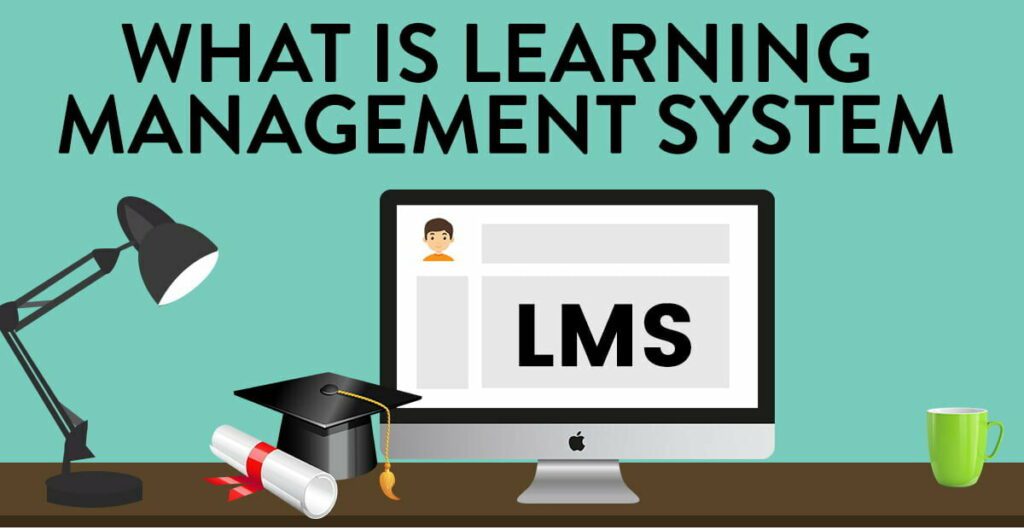Canvas Singapore: Unlocking the Power of Online Education with This LMS
Canvas Singapore: Unlocking the Power of Online Education with This LMS
Blog Article
Every Little Thing You Need to Know About Picking an Understanding Monitoring System
Picking a proper Understanding Monitoring System (LMS) is an important decision that can significantly affect the performance of your training programs. It entails a complete understanding of both your organizational demands and the essential functions offered in various LMS choices.
Understanding Understanding Administration Solution
A considerable variety of organizations today are acknowledging the worth of Learning Monitoring Equipment (LMS) as crucial tools for effective training and education. An LMS is a software program application designed to assist in the management, paperwork, tracking, reporting, and shipment of academic courses or training programs. By settling training campaigns right into a central platform, companies can enhance procedures and improve finding out experiences.
LMS platforms sustain numerous learning techniques, consisting of e-learning, blended understanding, and instructor-led training. Their versatility makes them appropriate for varied markets, from corporate training to academic organizations. Via making use of LMS, companies can supply constant content, guaranteeing that students and employees have accessibility to the needed resources no matter location.
Moreover, LMS services often include features that enable analytics and reporting, allowing organizations to evaluate the effectiveness of their training programs. This data-driven technique equips organizations to make educated choices regarding curriculum modifications and source allocation - Learning Management System Singapore. Inevitably, the adoption of an LMS can result in raised student engagement, enhanced retention rates, and enhanced overall performance, reaffirming its status as an important element of modern academic methods
Key Functions to Think About
When picking a Knowing Monitoring System, organizations need to prioritize certain attributes that line up with their training goals and user needs. Primarily, user-friendliness is necessary; a system with an intuitive user interface can boost student engagement and lower the time required for training administrators.
Another crucial feature is robust reporting and analytics abilities, enabling organizations to track student development, completion prices, and assessment outcomes. This data is important for refining training programs and demonstrating ROI.
Furthermore, mobile compatibility is increasingly important as learners prefer accessing web content on various gadgets. A responsive LMS guarantees that training is easily accessible anytime, anywhere, therefore increasing versatility.
Material administration performance is also crucial; the LMS must support various content kinds, consisting of video clips, quizzes, and interactive components, to provide to different learning styles.

Examining Your Company's Demands
Recognizing an organization's one-of-a-kind training requirements is vital for selecting the best Learning Management System (LMS) To begin this analysis, companies ought to perform a thorough evaluation of their current training landscape, consisting of existing programs, participant demographics, and details finding out goals. This procedure aids highlight strengths and gaps in current offerings, assisting the choice of an LMS that straightens with organizational objectives.
Furthermore, take into consideration the kinds of web content to be delivered, such as e-learning modules, conformity training, or combined learning experiences. Recognizing the preferred shipment techniques and learning styles of workers is essential for reliable training interaction. Companies must assess their technological framework, guaranteeing compatibility with the prospective LMS.
It is additionally essential to entail vital stakeholders in this assessment process. Involving trainers, IT team, and end-users can offer useful insights right into their choices and demands. In addition, develop clear metrics for success, such as student contentment and knowledge retention, to aid determine the efficiency of the selected LMS. By thoroughly evaluating these variables, organizations can make educated choices, ensuring their selected LMS efficiently meets their training needs and enhances general performance.
Comparing Various LMS Options
Numerous Understanding Management System (LMS) options are available on the market, each offering unique attributes and capabilities that cater to diverse business demands. When contrasting LMS options, organizations need to take into consideration several critical factors. The user interface and experience are paramount; an intuitive style can considerably impact user engagement and adoption rates.
2nd, review the scalability of the LMS. As your organization expands, the system needs to accommodate a raising variety of users and web content without jeopardizing performance. Third, integration capabilities are important; the LMS needs to seamlessly get in touch with existing devices, Singapore LMS such as HR systems, CRM platforms, and content collections, to enhance performance.
Additionally, consider the modification choices offered. An LMS that enables tailored branding, course development, and reporting can better line up with particular business objectives. Additionally, pricing designs vary widely, so it is important to examine the overall expense of ownership, including licensing fees, upkeep, and support.

Application and Assistance Techniques
Successfully implementing a Learning Administration System (LMS) calls for a tactical approach that includes detailed preparation and ongoing assistance. Begin by establishing clear goals that straighten with your organization's instructional objectives. Involve essential stakeholders and create a devoted implementation team to assist in interaction and cooperation throughout the procedure.
Start with a pilot program entailing a smaller sized user group, allowing for real-time feedback and adjustments. Offer thorough training to make certain individuals are comfortable with the LMS functionalities and functions.
Post-implementation assistance is equally essential. Develop a robust support group that includes helpdesk resources, customer guidebooks, and training sessions. On a regular basis collect responses from individuals to recognize locations for enhancement. In addition, consider producing a neighborhood discussion forum for individuals to share experiences and remedies.
Verdict
In final thought, picking a proper Understanding Administration System necessitates a comprehensive examination of readily available options and business needs. By thoroughly thinking about these elements, companies can guarantee efficient training shipment and eventually attain their educational objectives through the selected LMS.
A substantial number of organizations today are recognizing the worth of Knowing Monitoring Systems (LMS) as essential devices for reliable training and education and learning.Moreover, LMS options often integrate features that allow analytics and reporting, permitting organizations to assess the performance of their training programs.Determining an organization's distinct training demands is crucial for selecting the right Understanding Administration System (LMS) By meticulously evaluating these variables, companies can make educated choices, guaranteeing their picked LMS successfully satisfies their training demands and enhances overall performance.
By meticulously taking into consideration these factors, organizations can ensure reliable training distribution and eventually achieve their instructional objectives through the picked LMS.
Report this page